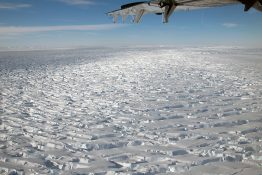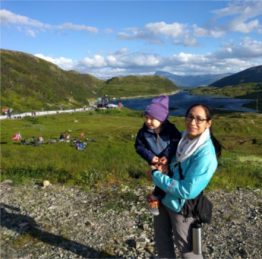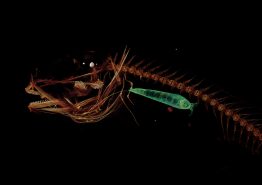The University of Washington’s College of the Environment and its faculty members are no strangers to ground-breaking and important research on volcanoes and magma—from a land-sea experiment tracking earthquakes and volcanoes along the Alaska Peninsula to publishing an atlas of seafloor volcanoes and deep-ocean life. George Bergantz, a professor in the College’s Department of Earth and Space Sciences, is a geologist who studies the physics of magma.
Read more »UW researchers will survey Antarctica’s Thwaites Glacier as part of major international effort
The National Science Foundation and the U.K.’s Natural Environmental Research Council this month announced a joint 5-year, $25 million effort to study Antarctica’s Thwaites Glacier. Nicknamed the “world’s most dangerous glacier,” Thwaites Glacier already is contributing to rising seas; if it collapsed it would raise global sea level by about three feet. The glacier may also act as a linchpin on the whole West Antarctic Ice Sheet, which could raise sea level by much more.
Read more at UW Today »UW researcher, Fulbright Scholar, spent winter above the Arctic Circle
Think Seattle is dark in winter? Imagine going farther north. Cecilia Peralta Ferriz, an oceanographer at the UW’s Applied Physics Laboratory who completed her doctorate at UW’s School of Oceanography in 2012, knows what that’s like. Last fall she was awarded a U.S. Fulbright Scholarship to spend nine months in Norway, based at the Norwegian Polar Institute in Tromsø, the third largest urban area north of the Arctic Circle.
Read more at UW Today »World’s deepest fish named to 10 ‘remarkable new species’ list for 2017
The deepest-dwelling fish in the sea just got one more bragging right. The World Register of Marine Species, or WoRMS, has named the Mariana snailfish one of its 10 “remarkable new species” discovered in 2017. The team that discovered and named the small fish that lives at ocean depths of up to 8,000 meters (26,200 feet) includes Mackenzie Gerringer, a postdoctoral researcher at the UW’s Friday Harbor Laboratories.
Read more at UW Today »Three UW Innovation Awards given to UW Environment faculty
College of the Environment faculty received all three of the University of Washington’s Innovation Awards for 2018. The awards are designed to stimulate innovation among faculty from a range of disciplines and to reward some of their most novel ideas, and are made possible by generous donors. Knut Christianson and Michelle Koutnik from the Earth and Space Sciences, along with David Shean from Civil and Environmental Engineering, were awarded $300,000 over two years to “build a digital glacier time machine” that will generate a high-resolution, 3-D time series of how glaciers have changed over time to help understand the future of water resources in the western United States.
Read more at the Office of Research »





